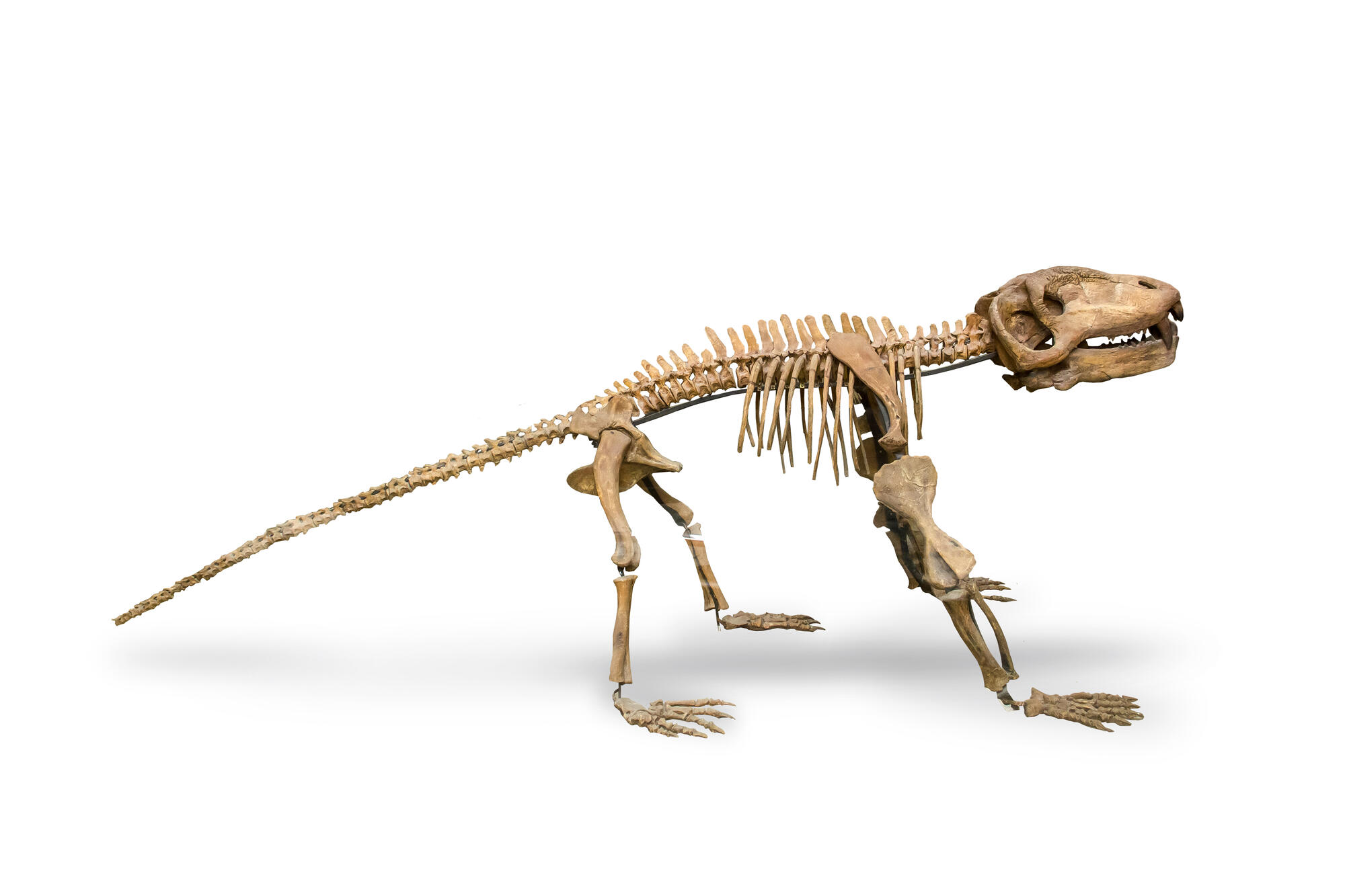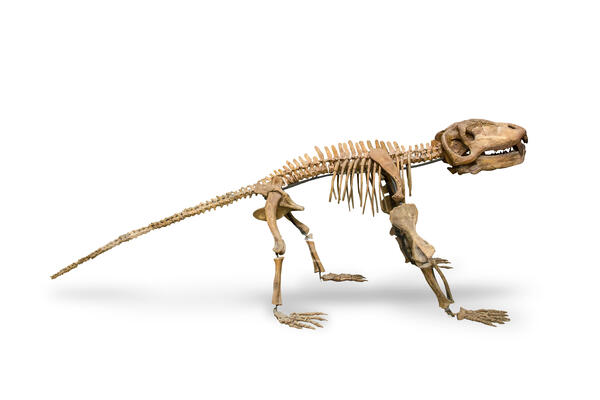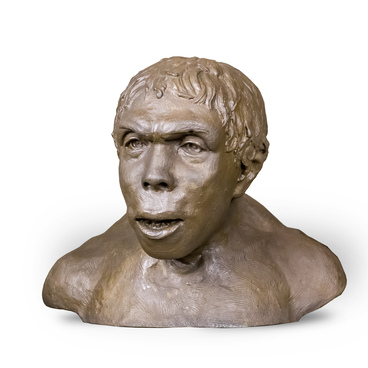Titanophoneus is a genus of ancient predatory reptiles. They lived in the Urals and the Volga region in the middle Permian period, about 265 million years ago. Their name means titanic murderer in Greek.
These dinosaurs weighed about 600 kilograms. Young Titanophoneus reached a length of 3 meters, adults — 5 meters. The skull was 60 centimeters long: its front side was high and narrow, the back of the skull was wide, which indicated well-developed neck muscles. After studying the large temporal recess, scientists concluded that powerful temporal muscles allowed these dinosaurs to slam their jaws quickly and forcefully. The sharp, beveled upper incisors fit tightly into the gaps between the lower ones. If not for such precision, a dinosaur could have broken its teeth when it closed its jaws. The canines of Titanophoneus were bent back; there were sharp cutting rows of small teeth. Many predators of different periods had such teeth structure: for example, dinosaurs and some species of large sharks.
Titanophoneus probably had a semi-aquatic lifestyle and ate large fish, shellfish, and amphibians. Sometimes they could attack large reptiles, especially in a group.
Unlike many other predatory reptiles, the forelimbs and hindlimbs of Titanophoneus were of the same length. The thigh and crus were similar to those of modern crocodiles, but the feet were disproportionately wide concerning the overall height of the animal. Paleontologists suggest that it had webbed toes, which allowed it to swim quickly. These dinosaurs could use their long tails as a weapon and deliver strong blows to the enemy, just like modern crocodiles and large lizards for example, monitor lizards. However, their tail did not help them in swimming.
The first known skeleton of a Titanophoneus was found in the Apastovsky district of Tatarstan in Isheevo. In 1938, the Soviet paleontologist and science fiction writer Ivan Yefremov made their scientific description.
These dinosaurs weighed about 600 kilograms. Young Titanophoneus reached a length of 3 meters, adults — 5 meters. The skull was 60 centimeters long: its front side was high and narrow, the back of the skull was wide, which indicated well-developed neck muscles. After studying the large temporal recess, scientists concluded that powerful temporal muscles allowed these dinosaurs to slam their jaws quickly and forcefully. The sharp, beveled upper incisors fit tightly into the gaps between the lower ones. If not for such precision, a dinosaur could have broken its teeth when it closed its jaws. The canines of Titanophoneus were bent back; there were sharp cutting rows of small teeth. Many predators of different periods had such teeth structure: for example, dinosaurs and some species of large sharks.
Titanophoneus probably had a semi-aquatic lifestyle and ate large fish, shellfish, and amphibians. Sometimes they could attack large reptiles, especially in a group.
Unlike many other predatory reptiles, the forelimbs and hindlimbs of Titanophoneus were of the same length. The thigh and crus were similar to those of modern crocodiles, but the feet were disproportionately wide concerning the overall height of the animal. Paleontologists suggest that it had webbed toes, which allowed it to swim quickly. These dinosaurs could use their long tails as a weapon and deliver strong blows to the enemy, just like modern crocodiles and large lizards for example, monitor lizards. However, their tail did not help them in swimming.
The first known skeleton of a Titanophoneus was found in the Apastovsky district of Tatarstan in Isheevo. In 1938, the Soviet paleontologist and science fiction writer Ivan Yefremov made their scientific description.


